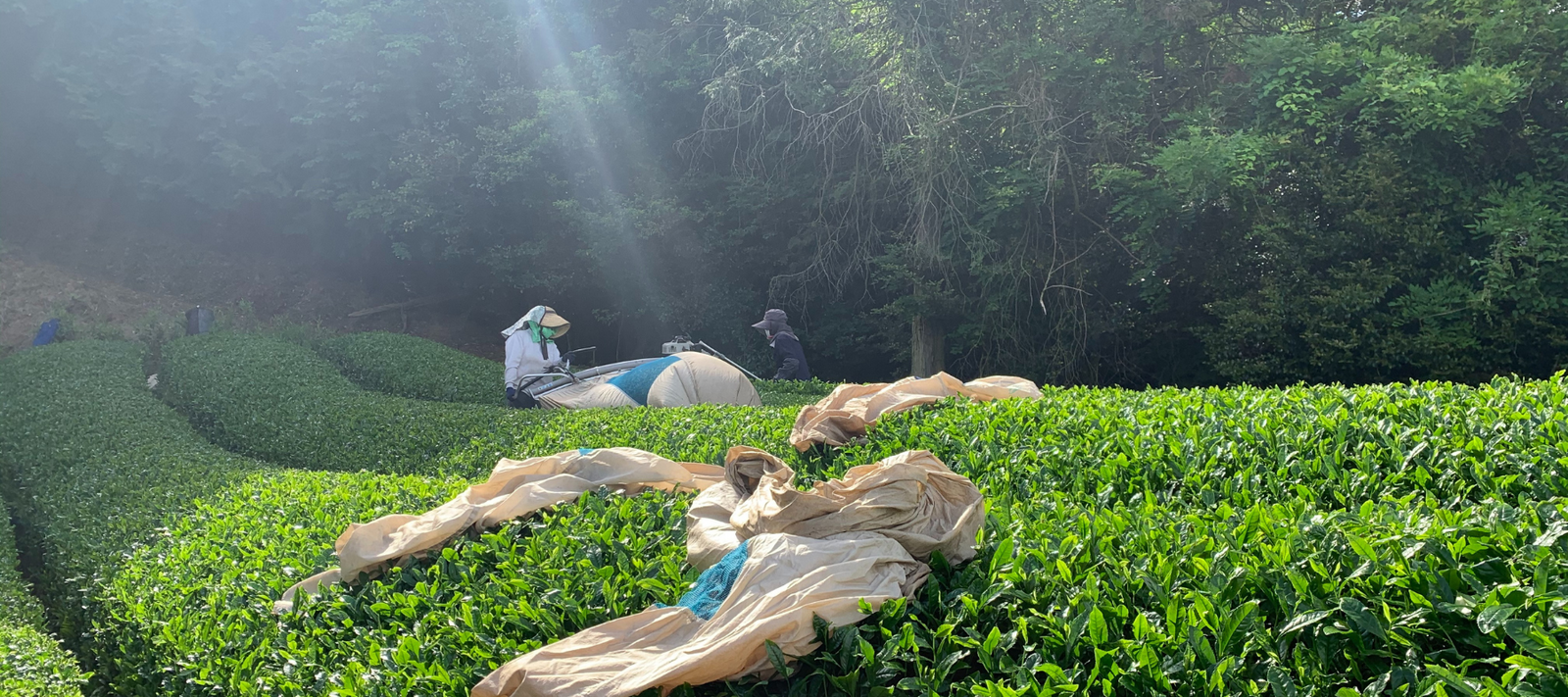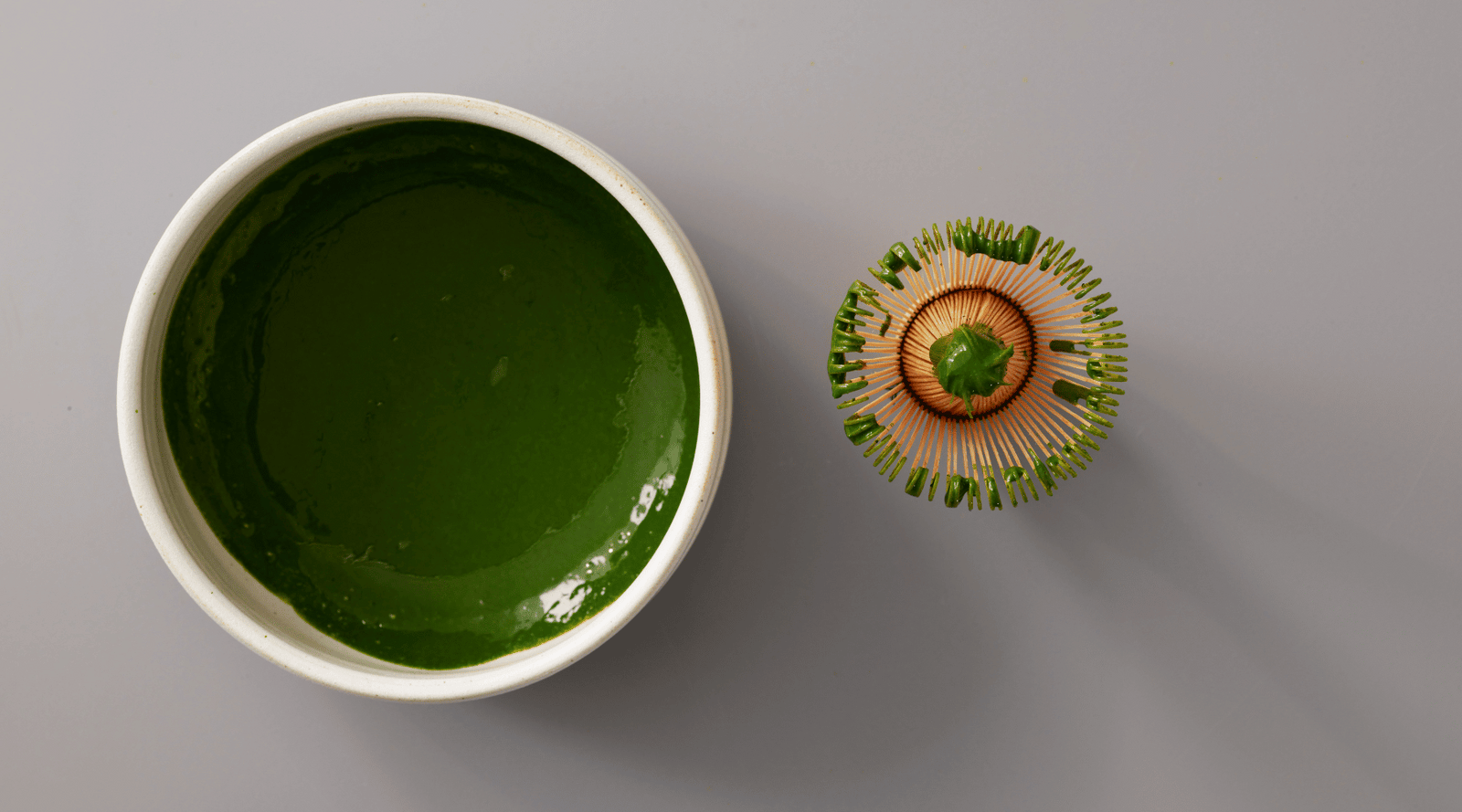Your Cart is Empty
Author: Max McPartland
Abstract:
“Ceremonial grade” is a term used to describe matcha that’s high enough in quality to be served on its own—without milk, sweetener, or flavoring. It’s modeled after the kind of tea used in the Japanese tea ceremony (茶道 / sadō), where matcha is prepared with care and consumed on its own.
There’s no industry-wide standard for what qualifies as ceremonial grade—but the term is still useful, so long as we understand what it actually refers to.
What Ceremonial Grade Labels Should Indicate about Matcha
- It’s intended for traditional preparation—as usucha (thin tea) or koicha (thick tea) (see more below).
- It’s stone-milled (or bead-milled) to ultra-fine powder.
- It’s made from tencha, not culinary leaf or pan-fired tea.
- It has low bitterness, clean umami, and high clarity in taste.
- It’s vivid green, not yellow, olive, or brown.
Ceremonial grade signals leaf quality meant for drinking — not blending into lattes or baked goods (even if those lines can blur).
We use ceremonial grade as a signpost: This matcha meets the standard for traditional, standalone preparation. We expect it to perform at the same level you'd find in high-end cafes in Kyoto—or at our own cupping table.
Ceremonial grade does NOT indicate that the quality of the matcha justifies a certain price. In other words, just because a matcha is labeled or marketed as ceremonial grade does not mean it is justifiably expensive.
So, How do I Know if a Matcha is High Quality?
High-quality matcha stands out immediately in five ways:
1. Color
Vibrant green matcha is a sign of high chlorophyll content—an indicator of proper shading and careful harvest. Dull, olive, or yellow-green matcha suggests lower quality leaf or poor processing.
2. Aroma
Ceremonial matcha has a distinct “shade aroma”—a sweet, marine-like fragrance influenced by dimethyl sulfide, a compound developed during shading. The higher the quality, the more pronounced this aroma becomes.
3. Flavor
Top-grade matcha is rich in umami and naturally low in bitterness. This balance comes from high levels of L-theanine and low catechin content—traits that define true ceremonial tea.
These characteristics—vivid color, strong shade aroma, and clear umami—are hallmarks of first harvest (or “first flush”) matcha. After a long winter, the tea plant pushes its most nutrient-dense leaves in the spring. First flush teas contain more chlorophyll, L-theanine, and aromatic compounds than later harvests.
So when you see “first flush” on the label, it usually means the matcha inside is of a higher standard.
4. Region
Another indicator of high quality of matcha is the region of production. Uji, in Kyoto Prefecture, and Nishio, In Aichi Prefecture are two historically renowned matcha terriers, known for their ideal climate and centuries of tea-growing expertise.
5. Brand
Branding and marketing are how we got to this issue in the first place, but there is value in searching for reputable brands. Whether it’s customer reviews, respected industry recognition or in-depth origin descriptions. A legitimate company should be able—and willing—to share everything they know about the product.

Matcha Origins
- Matcha Wazuka & Matcha Kame - Uejima Sourokoen: Wazuka, Uji, Kyoto, Japan
- Matcha Sonogi - Sonogi Tea Farm: Higashiosonogi, Nagasaki, Japan
Click Origins to explore all of our origin pages.
OriginsUsucha (Thin Tea) vs. Koicha (Thick Tea)
Another way to evaluate matcha is how it performs in traditional preparation—specifically as usu-cha (thin-tea) or koi-cha (thick-tea).
Usucha (Thin Tea)
Usucha is the more common form:
- 2g matcha
- 60ml water
- Whisked to a smooth, foamy texture
Koicha (Thick Tea)
- 4g matcha
- 40ml water
- Stirred—not whisked—into a thick, syrupy paste
Koicha requires an exceptional leaf. If a matcha has even slight bitterness or lacks depth, those flaws will be obvious in this form. Only the highest quality matcha—shade-grown, first flush, expertly milled—can hold up to koicha preparation.
The History (or Lack Thereof) Behind ‘Ceremonial Grade’
In Japan:
There’s no category called “ceremonial grade” in traditional Japanese tea culture. Instead, matcha is evaluated by school-specific criteria (like Urasenke, Omotesenke) and ranked based on:
- Cultivar and origin.
- Shading and processing.
- Age of the tea bush (younger = softer, higher quality).
- Milling finesse and aroma.
Tea used in the tea ceremony (chanoyu) is often referred to simply as koicha-use matcha or usucha-use matcha, based on how it’s prepared—not with a universal "grade."
In the West:
The term ceremonial grade began appearing in the early 2000s as matcha entered health food and premium tea markets in the U.S. and Europe. It was created to help consumers distinguish between:
- Matcha meant for traditional preparation (drink on its own)
- Matcha meant for culinary use (smoothies, lattes, baking)
Importers needed a shorthand to convey quality in a market unfamiliar with tea ceremony or the Japanese ranking system.
In Summary
Calling a matcha ceremonial grade is less effective for distinguishing between brands, but more useful within a single brand to differentiate quality levels. If we ever offered a matcha closer to "culinary grade," then it would be important to make that distinction. This helps clarify the intended use and quality differences for our customers, making it easier to choose the right matcha for their needs.
SMALL BATCH CEREMONIAL GRADE MATCHA
Matcha is powdered green tea at its most refined—shade-grown leaves stone-milled into a vibrant powder for traditional whisked tea. Our ceremonial matcha is sourced directly from small farms in Wazuka, Kyoto; Higashisonogi, Nagasaki; and Anshun, Guizhou, where producers mill each lot in small batches to preserve freshness and clarity. The result is a collection defined by balance, umami, and the distinct character of each origin.






